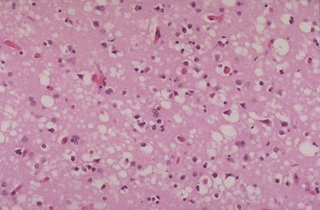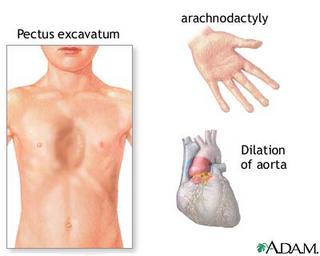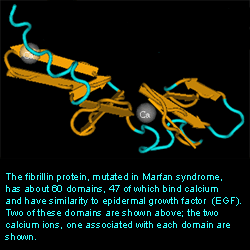Haemonchus contortus Kinesin
Haemonchus contortus
A common parasite infecting sheep and goats, H. contortus is of major economic importance. A search for kinesin homologues to the Drosophila P17210 kinesin protein revealed a large number of hits in the H. contortus chromosome. By performing BLAST searches on the sequences found to be similar, their individual similarity to known kinesins could be determined, and through that method six likely kinesin homologues were identified. This procedure of working with a non-annotated section of sequenced DNA made clear the importance of having properly annotated sequences, beyond simply having masses of sequenced DNA.
Sequencing by the Wellcome Trust Sanger Institute.
Contig52451, P-value: 7.8e-30
AAGAGGTATAACGTGTTTGCAATTTCTTCCCTATCAAAAAGCAGCAAGC
AAGAGTGAGAGTTCGAAGTTGGAAATATCGCAAACAGCAAAATAGTTC
CATTTTTCAGGGAAAAGTATTCGTGTACGACAAAGTCTTTAAACCGAAT
ACAACCCAGGAGCAAGTTTATATGGGTGCAGCCTATCACATTGTCCAAG
ATGTTCTGTCGGGTTACAATGGGACAGTATTCGCCTACGGTCAGACGTC
TTCTGGTAAAACTCACACAATGGAG
Blast results (blastx): kinesin family members present
Contig23052, P-value: 4.0e-11
GTTGGAGCGACTCAGATGAACGAGGAAAGCAGTCGGTCCCATGCTATGT
TTTCGGTGACGGTTGAAGCGAGCGAAAGAGGCATGGTTACTCAGGGAAA
GTTGCATCTCGTCGATCTAGCGGGTAGCGAACGTCAGAGCAAAACTGGA
GCCGCTGGA
Blast results (blastx): kinesin family members present
Contig76363, P-value: 3.9e-09
CATATACCTTACCGTAATTCGAAACTGACTATGATTCTGCGCGATAGCCT
GGGAGCTGGTAATTCCAAGACGATGGTCATCGTTGCATTGAACCCCTCTG
CGGCTCAAATCGCAGAAACCAAACGAAGCCTGGAGTTCGCACAACAG
Blast results (blastx): kinesin family members present
Contig65838, P-value: 1.6e-06
CAGTCGCTTAGTGTGTTGGGTCGCGTAATCAGAACGCTGTCTGCAGTACA
TCGACGTGATGAGTTCGTGCCATATCGCGATTCTAAACTGACTCACATTT
TGCGAGATTCCCTCGGAGGAAACAGCAAGACAGCAGTGATTGTTAATCTT
CATCCC
Blast results (blastx): kinesin family members present
Contig22481, P-value: 1.7e-06
GAGAGCCAGaaGAGATTTGTTGATTTCAGCTCCCTCATGTCGCGTTTGCCT
ATCAGAATTACCGGTATCTTGACCACGTTCATTACCCGCTAGGTCAatcaaA
GAGAACTTCCCCCATAACtttttaTCTCtgaaaaaTggaagcTGagaacTAGCGaga
acgcGATgaaaaaaaaacgcactttcgaagcacaatttgaaaacggcatgcgatctgcttgaattg
gaatttgcagaggttgcacccgcagtgcgcatatcggttccttgtcgaatgagttccaggac
Blast results (blastx): kinesin family members present
Contig18696, P-value: 4.4e-05
TCCAGCGGCTCCTGTTTTGCTCTGACGTTCGCTACCAGCCAGATCGACGAG
ATGCAACTTTCCCTGAGTAACCATGCCTCTTTCGCTGGCTTCAACCGTCAC
CGAAAACATAGCATGGGAACGACTGCTTTCCTCGTTCATCTGAGTCGCTCC
AAC
Blast results (blastx): kinesin family members present

















